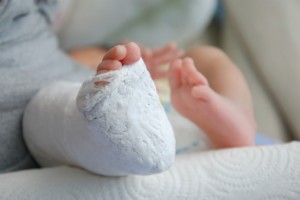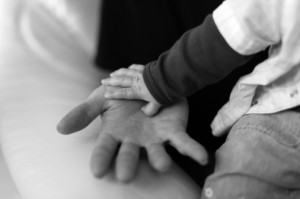 One of the most frightening moments for any parent is to learn that his or her child has been injured in an accident. The overwhelming hope is that the injury is minor and that the child is not in pain. Unfortunately, there are occasions where the injury to the child is serious, requiring medical attention, surgery, and in some cases, long-term care. The medical expenses can become significant, causing financial stress on the entire family. However, in cases where the child’s injury was the result of another person’s negligence such as in a car accident or where there was a medical mistake, the child may be able to recover damages in a personal injury lawsuit. However, when a child is the victim, there are special rules that must be considered.
One of the most frightening moments for any parent is to learn that his or her child has been injured in an accident. The overwhelming hope is that the injury is minor and that the child is not in pain. Unfortunately, there are occasions where the injury to the child is serious, requiring medical attention, surgery, and in some cases, long-term care. The medical expenses can become significant, causing financial stress on the entire family. However, in cases where the child’s injury was the result of another person’s negligence such as in a car accident or where there was a medical mistake, the child may be able to recover damages in a personal injury lawsuit. However, when a child is the victim, there are special rules that must be considered.
Statute of Limitations
While the statute of limitations varies from state to state, in general a personal injury lawsuit must be filed within 1-3 years of the date of the injury or the date that the victim should have known about the injury. For example, in Georgia a negligence lawsuit must be brought within 2 years from the date of the injury or death. Georgia actions for medical malpractice also have a statute of limitations of 2 years. The rule, however, is usually different when a child is the victim. Children are considered incapacitated. Thus, the limitations period is tolled, or put on hold. In some cases it is tolled until the victim is no longer under an incapacity. This usually means that the statute does not begin to run until the child turns 18.
The Plaintiff in the Lawsuit
Even though the statute of limitations for a child victim is tolled until the child reaches majority, the child does not have to wait to file a personal injury lawsuit. However, until the child reaches majority, he or she would not be permitted to file the lawsuit in his or her own name. Instead, someone else, such as a parent, would have to file the lawsuit on the child’s behalf. The person filing the lawsuit is referred to as the child’s “next friend.” Any damages won in such a lawsuit would belong to the child, not the next friend.
Claims for Economic Damages and Non-Economic Damages
A child typically does not pay his or her own medical bills and is not responsible for them. Parents are responsible for their children’s medical expenses. Thus, if a child is injured and incurs medical bills, the child cannot sue to recover them. The parents must. Because of this, legal action concerning an injured child can be divided into two different claims. The child’s claim would relate to pain and suffering and any other non-economic losses. The parents’ claim would be for the medical expenses and other economic losses. The child’s claims and the parent’s claims can be joined together in a single lawsuit, or could be heard separately. In either case there will be two verdicts, and if the plaintiffs prevail, two monetary awards. In addition, there would also be two different statutes of limitations in the cases, as one claim belongs to the child and the other to the parents.
Access to Settlement Funds
Judgments awarded to a child are typically held by the court on behalf of the child until the child reaches majority. Or the funds are placed in a trust for the benefit of the child. Parents rarely have access to such funds. However, parents do have ownership of financial awards for claims for economic damages, such as medical expenses.
Do you think a child’s recovery for pain and suffering in a personal injury case should always be higher than a similarly injured adult, since a child is likely to suffer more pain than an adult and have more difficulty coping with it?

